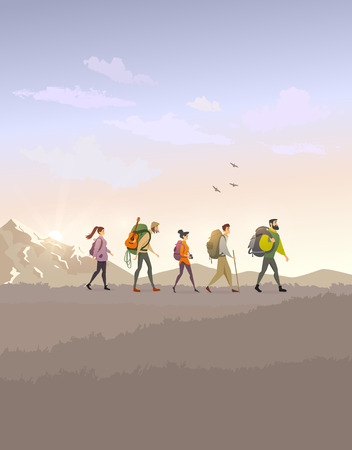1. Introduction to Outdoor Budgeting
When it comes to exploring the great outdoors, whether you’re planning a quick day hike or gearing up for a multi-day backpacking trip, having a clear budget can make all the difference. Budgeting isn’t just about saving money—it’s about knowing what to expect, avoiding last-minute stress, and making sure your adventure is safe and enjoyable.
For outdoor enthusiasts in the U.S., costs can vary widely depending on where you go, how long you stay, and what gear you need. Let’s take a look at why budgeting matters for both day hiking and backpacking, and how smart financial planning can set you up for a better time on the trail.
Why Is Budgeting Important?
Planning ahead with a solid budget helps you:
- Identify essential vs. optional expenses
- Avoid overspending on unnecessary gear
- Reduce surprises along the way
- Make informed decisions about destinations and duration
Day Hiking vs. Backpacking: What’s the Difference?
Before diving into specific costs, it’s good to know what sets these two adventures apart:
| Day Hiking | Backpacking | |
|---|---|---|
| Duration | Single day (few hours) | Multiple days/nights |
| Gear Needs | Minimal (water, snacks, basic layers) | Extensive (tent, sleeping bag, stove, meals) |
| Permits/Fees | Seldom required or low-cost | Often required; higher cost for some parks/trails |
| Total Cost Range* | $0-$50 per trip (if you own basic gear) | $100-$500+ per trip (depending on gear & location) |
*Estimates based on average U.S. outdoor experiences.
The Value of Smart Financial Planning Outdoors
No matter if you’re sticking close to home or venturing deep into national parks like Yosemite or the Smokies, understanding where your money goes lets you focus on what really matters—enjoying nature. A little preparation goes a long way toward making your adventure fun and affordable.
2. Essential Gear: Upfront Costs Compared
When it comes to gearing up for your outdoor adventure, there’s a big difference between what you need for a day hike and what’s required for an overnight backpacking trip. In the U.S., many people start with day hiking before moving on to backpacking, and some gear overlaps. However, backpacking usually demands more specialized (and pricier) equipment.
Must-Have Gear Breakdown
| Gear Category | Day Hiking (Estimated Cost) | Backpacking (Estimated Cost) | Notes/Overlap |
|---|---|---|---|
| Backpack | $30–$80 (20L–30L daypack) | $100–$250 (50L+ backpack) | Daypacks are lighter and cheaper; backpacking packs hold more weight and gear. |
| Shoes/Boots | $60–$150 | $80–$200 | Good hiking shoes work for both, but backpacking may need sturdier boots. |
| Clothing Layers | $50–$150 | $100–$250 | Base layers, rain jacket, hat—often used for both activities. |
| Navigation Tools | $10–$50 (map, compass, phone app) | $10–$50 | Same for both; GPS devices can increase cost for backpackers. |
| Water System | $15–$40 (bottle/bladder) | $40–$120 (plus filter/purifier) | Backpackers need water filters or purification systems. |
| Food/Snacks Storage | $5–$15 (small container) | $20–$60 (bear canister/bag) | Bears aren’t everywhere, but many U.S. areas require bear-proof containers for backpackers. |
| Tent/Shelter | N/A (not needed) | $100–$400+ | A must for overnights; some use hammocks or bivy sacks instead. |
| Sleeping Bag & Pad | N/A (not needed) | $80–$300+ | Essential for sleeping outside; prices vary by warmth and weight. |
| Cooking Gear | N/A (not needed) | $40–$120 (stove, pot, fuel) | Most day hikers pack sandwiches/snacks; backpackers cook meals. |
Main Takeaways on Gear Costs in the U.S.
If you’re sticking to day hikes, you can get away with basic clothing, a small pack, and simple navigation tools—most of which are affordable and easy to find at stores like REI or even Walmart. Backpacking requires extra investment in shelter, sleeping systems, cooking gear, and sometimes more advanced safety items. The biggest jump in cost is usually the tent/shelter and sleeping bag/pad combo.
The good news? If you already have quality boots or weather-resistant clothes from day hiking, you won’t need to double up when upgrading to backpacking—these basics often carry over. But expect your initial costs to rise significantly as you add those overnight essentials.
![]()
3. Permits, Fees, and Access Costs
When planning your outdoor adventure, whether it’s a quick day hike or a multi-day backpacking trip, it’s important to factor in the costs associated with simply getting on the trail. These expenses can add up and vary depending on your destination and the type of trip you’re taking.
National Park Entry Fees
Most popular trails in the U.S., especially those inside national parks, require an entrance fee. If you’re planning several trips throughout the year, investing in an America the Beautiful annual pass ($80) might save you money in the long run.
| Fee Type | Day Hiking | Backpacking (Overnight) |
|---|---|---|
| National Park Entry (per vehicle) | $20–$35 | $20–$35 |
| America the Beautiful Pass (annual) | $80 | $80 |
Parking Passes and Trailhead Fees
Certain trailheads require their own parking passes or day-use fees, even outside of national parks. For example, many trailheads in Washington and Oregon use the Northwest Forest Pass ($5/day or $30/year), while California has the Adventure Pass for some areas.
| Type of Pass | Cost per Day Hike | Cost per Backpacking Trip (multi-day) |
|---|---|---|
| Trailhead Parking/Day-Use Fee | $5–$10 | $5–$10 per day |
| Annual Trailhead Parking Pass | $30–$50 | $30–$50 |
Permits for Overnight Stays
If you’re heading into the backcountry for an overnight backpacking adventure, many areas require additional permits. Popular routes like the John Muir Trail or Enchantments in Washington often use a lottery system for permits, and prices can range from $6 for a reservation up to $20+ per person per night depending on the area.
| Permit Type | Required? | Typical Cost (per person/night) |
|---|---|---|
| Day Hiking Permit (if needed) | No (rarely required) | $0–$10 (for special areas) |
| Overnight/Backcountry Permit | Yes (commonly required) | $6–$20+ |
| Campsite Reservation Fee (optional) | If reserving specific sites | $10–$30+ |
What Does This Mean for Your Budget?
If you stick to short day hikes in local parks or on public lands with no entry fee, your costs will be minimal—maybe just parking. But as soon as you venture into national parks or want to spend a few nights under the stars in popular backcountry zones, expect to pay more for permits and access. Always check regulations ahead of time so you don’t get surprised by unexpected fees!
4. Food, Fuel, and Other On-the-Trail Expenses
When you’re planning any outdoor adventure, your food and fuel choices can really affect your budget. Let’s break down the costs for both day hikes and multi-night backpacking trips to help you make smart, wallet-friendly decisions.
Day Hiking: Simple Snacks, Lower Costs
For most single-day hikes, you won’t need much more than snacks and a packed lunch. You can easily grab energy bars, trail mix, sandwiches, or fruit from home or a grocery store. There’s usually no need for special cooking equipment or extra fuel—just pack what you’ll eat and carry enough water or a lightweight filter if refilling on the trail.
| Expense | Typical Cost (Day Hike) |
|---|---|
| Food/Snacks | $5–$15 |
| Water/Fuel | $0–$5 (if buying bottled water or using a filter) |
| Other Supplies (e.g., electrolyte tabs) | $2–$6 |
Budget Tip:
Buy snacks in bulk or prep homemade trail mixes to save even more money. Reusable water bottles are cheaper and better for the environment than buying bottled water every time.
Backpacking: Meals, Cooking Gear, and More Planning
Multi-day backpacking trips require more planning—and more food. You’ll need lightweight, calorie-dense meals like dehydrated dinners, oatmeal packets, and jerky. Since you’ll be cooking in the backcountry, factor in the cost of a portable stove and fuel canisters. Water purification is also key; investing in a filter up front saves money over time compared to carrying all your water.
| Expense | Typical Cost (Backpacking Trip per Day) |
|---|---|
| Freeze-Dried/Dehydrated Meals | $8–$15 per meal |
| Snacks/Bars/Nuts | $4–$10 |
| Stove Fuel (per trip) | $5–$10 (split over multiple days) |
| Water Purification Tabs/Filter (initial investment) | $20–$100+ (filter lasts multiple trips) |
| Coffee/Tea Packets | $1–$3 per day |
Budget Tips:
- DIY Meals: Prep your own meals at home using instant rice, pasta sides, or couscous with seasonings to cut costs versus buying pre-packaged backpacker meals.
- Share Fuel: If hiking with friends, split stove fuel costs by sharing one stove among your group.
- Invest Smart: A quality water filter pays off after just a few trips compared to disposable options.
The Bottom Line: Plan Ahead for Savings
The longer your adventure, the more you’ll spend on food and fuel—but with some planning, you can keep these expenses in check. Whether you’re heading out for a day hike or gearing up for a week in the wilderness, choosing budget-friendly meal options and sharing gear when possible goes a long way toward making your adventure affordable.
5. Long-Term Value and Hidden Costs
The Real Price Tag: Beyond the Store Shelf
When it comes to budgeting your adventure, especially in the U.S., its easy to focus just on the price tag of gear at REI or Walmart. But whether youre day hiking in the Rockies or backpacking through Yosemite, the real cost includes how long your gear lasts, how much it costs to maintain, and when youll need to replace it. Lets break down what you should keep in mind so your investment goes further.
Gear Longevity: Buy Once, Cry Once
Investing a little more upfront for quality gear often pays off over time. For example, a well-made backpack or tent can last you many seasons if properly cared for, whereas cheaper options might only get you through one or two trips before they start falling apart. Heres a quick comparison:
| Item | Budget Option (Lifespan) | Premium Option (Lifespan) |
|---|---|---|
| Daypack | $40 (1-2 years) | $120 (5+ years) |
| Tent | $80 (2-3 years) | $250 (7+ years) |
| Sleeping Bag | $60 (2 years) | $200 (10+ years) |
Maintenance: A Little TLC Goes a Long Way
Taking care of your gear can save you cash in the long run. Here are some practical tips:
- Clean and dry everything after each trip. Mold and mildew are the enemies of tents and sleeping bags.
- Store gear properly. Don’t leave backpacks compressed or boots caked in mud—give them space and keep them dry.
- Repair, don’t replace. Learn simple fixes like patching holes in jackets or replacing zipper pulls instead of tossing items out.
- Use protective treatments. Spray waterproofers on boots and tent flys annually to extend their life.
Hidden Costs: What’s Easy to Overlook?
Some costs sneak up on even experienced hikers and backpackers:
- Parks Passes & Permits: Most U.S. national parks require an entrance fee or backcountry permit.
- Transportation: Gas, parking, shuttles—especially if your trailhead isn’t close by.
- Food & Fuel: Backpacking meals and stove fuel add up fast compared to homemade sandwiches for day hikes.
- Laundry & Cleaning Supplies: Keeping technical fabrics clean requires special detergents that cost more than regular soap.
Stretch Your Dollar: Smart Outdoor Spending Tips
- Buy used gear. Check out local gear swaps, Facebook Marketplace, or REI Garage Sales for deals on gently used equipment.
- Befriend fellow hikers. Swap or borrow items you only need occasionally instead of buying everything new.
- Take advantage of sales events. Look for deals during Memorial Day, Labor Day, or Black Friday weekends.
- Diversify your purchases. Some items work for both day hikes and backpacking (like headlamps or water filters), so prioritize multi-use gear first.
The bottom line? Whether youre hitting your favorite local trail for an afternoon hike or planning a weeklong trek through Glacier National Park, thinking beyond the sticker price will help you make smart choices—and keep more money in your pocket for your next adventure!


